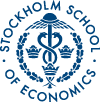No 488: Trade Liberalization and the Geography of Production: Agglomeration, Concentration and Dispersal in Indonesia’s Manufacturing Industry
Örjan Sjöberg () and Fredrik Sjöholm ()
Additional contact information
Örjan Sjöberg: Dept. of Economics, Stockholm School of Economics, Postal: Stockholm School of Economics, P.O. Box 6501, S-113 83 Stockholm, Sweden
Fredrik Sjöholm: EIJS at the Stockholm School of Economics, Postal: Stockholm School of Economics, P.O. Box 6501, S-113 83 Stockholm, Sweden
Abstract: The effect of trade liberalization on the spatial concentration of economic activities is not straightforward. It has, on the one hand been widely argued that protectionism increase spatial concentration when firms locate close to the main domestic markets, but it has also been argued that trade expansion primarily favour existing industrial centres and therefore lead to increased regional inequalities. We examine the spatial concentration of manufacturing in Indonesia between 1980 and 1996, a period when Indonesia substantially liberalized its trade regime. The high concentration has not decreased and establishments engaged in international trade are actually comparably concentrated. We discuss some possible explanations to the spatial concentration in Indonesia and conclude that a host of factors including the spatial configuration affects the outcome of trade liberalizations.
Keywords: trade policy; geography; agglomeration; manufacturing; Indonesia
34 pages, January 15, 2002
Questions (including download problems) about the papers in this series should be directed to Helena Lundin ()
Report other problems with accessing this service to Sune Karlsson ().
RePEc:hhs:hastef:0488This page generated on 2024-09-13 22:19:41.

